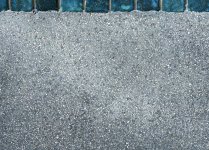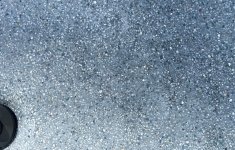Hairline cracks in new Primera Stone
- Thread starter HC Marmot
- Start date
You are using an out of date browser. It may not display this or other websites correctly.
You should upgrade or use an alternative browser.
You should upgrade or use an alternative browser.
I have Primera Stone as well that was done 4 years ago. I have not seen or have any hairline cracks such as what I see in your photos. It would seem that the workers polishing it would have noticed or would have tried to polish them out. Was it good weather when they applied it? I would ask the PB or the subcontractor to review it. Are you now filling the pool?
Weather was good during application which they finished around noon. Overnight between plaster and polishing the temperatures were cool, probably got to right above freezing for an hour or two in the early morning (forecast low was 43).I have Primera Stone as well that was done 4 years ago. I have not seen or have any hairline cracks such as what I see in your photos. It would seem that the workers polishing it would have noticed or would have tried to polish them out. Was it good weather when they applied it? I would ask the PB or the subcontractor to review it. Are you now filling the pool?
The pool is filling now. I had a brief conversation with the contractor and he said that the cracks will rehydrate and disappear once full. I have a hard time believing this other than they may be harder to see once wet and submerged under water.
Last edited:
Cena_sea
Well-known member
- Mar 17, 2021
- 252
- Surface
- Plaster
- Chlorine
- Salt Water Generator
- SWG Type
- Jandy Aquapure 1400
We did not do primera but regular wet edge but looking at the tile line the plaster looks off too. Isn’t that post acid wash?
Yes, this is post acid wash. We plan to talk to the contractor about this as well.We did not do primera but regular wet edge but looking at the tile line the plaster looks off too. Isn’t that post acid wash?
- May 23, 2015
- 25,727
- Pool Size
- 16000
- Surface
- Plaster
- Chlorine
- Salt Water Generator
- SWG Type
- Pentair Intellichlor IC-60
Was this a full chip out of the old plaster down to the gunite or did they do a skim coat?
They did a full chip out to the gunite.Was this a full chip out of the old plaster down to the gunite or did they do a skim coat?
- May 23, 2015
- 25,727
- Pool Size
- 16000
- Surface
- Plaster
- Chlorine
- Salt Water Generator
- SWG Type
- Pentair Intellichlor IC-60
They did a full chip out to the gunite.
Well that’s good.
What you’re seeing are shrinkage cracks. They are common in the curing of cement materials and they have many causes but it’s typically due to hydration issues during curing. If cement loses too much water too quickly during the initial curing process, the material can shrink and crack. Too much water in the cement or lubricating a trowel with too much water during hard troweling can add too much water to the surface and that can lead to shrinkage cracks. Once there they will not go away. However, once the pool is full, you will probably not notice them.
Not much you can do about it. They could try sanding the surface more but they’re probably too deep to remove with grinding.
Just something you’re going to have to live with as you will probably be the only person that knows they are there.
Yes, they are hard to see now that the pool is full.Well that’s good.
What you’re seeing are shrinkage cracks. They are common in the curing of cement materials and they have many causes but it’s typically due to hydration issues during curing. If cement loses too much water too quickly during the initial curing process, the material can shrink and crack. Too much water in the cement or lubricating a trowel with too much water during hard troweling can add too much water to the surface and that can lead to shrinkage cracks. Once there they will not go away. However, once the pool is full, you will probably not notice them.
Not much you can do about it. They could try sanding the surface more but they’re probably too deep to remove with grinding.
Just something you’re going to have to live with as you will probably be the only person that knows they are there.
Knowing that we have shrinkage cracks, is there anything I should do from a water chemistry perspective to lower the chances of calcium coming to the surface through the cracks and making them more visible/white? Is this even a concern? We are very religious about following the TFP methodology.
- May 23, 2015
- 25,727
- Pool Size
- 16000
- Surface
- Plaster
- Chlorine
- Salt Water Generator
- SWG Type
- Pentair Intellichlor IC-60
Just keep your CSI (saturation) balanced. Since you have an SWG, the CSI should be kept at or below zero at all times (-0.3 to -0.1 range). Other than that, not really much you can do.
Thread Status
Hello , This thread has been inactive for over 60 days. New postings here are unlikely to be seen or responded to by other members. For better visibility, consider Starting A New Thread.




